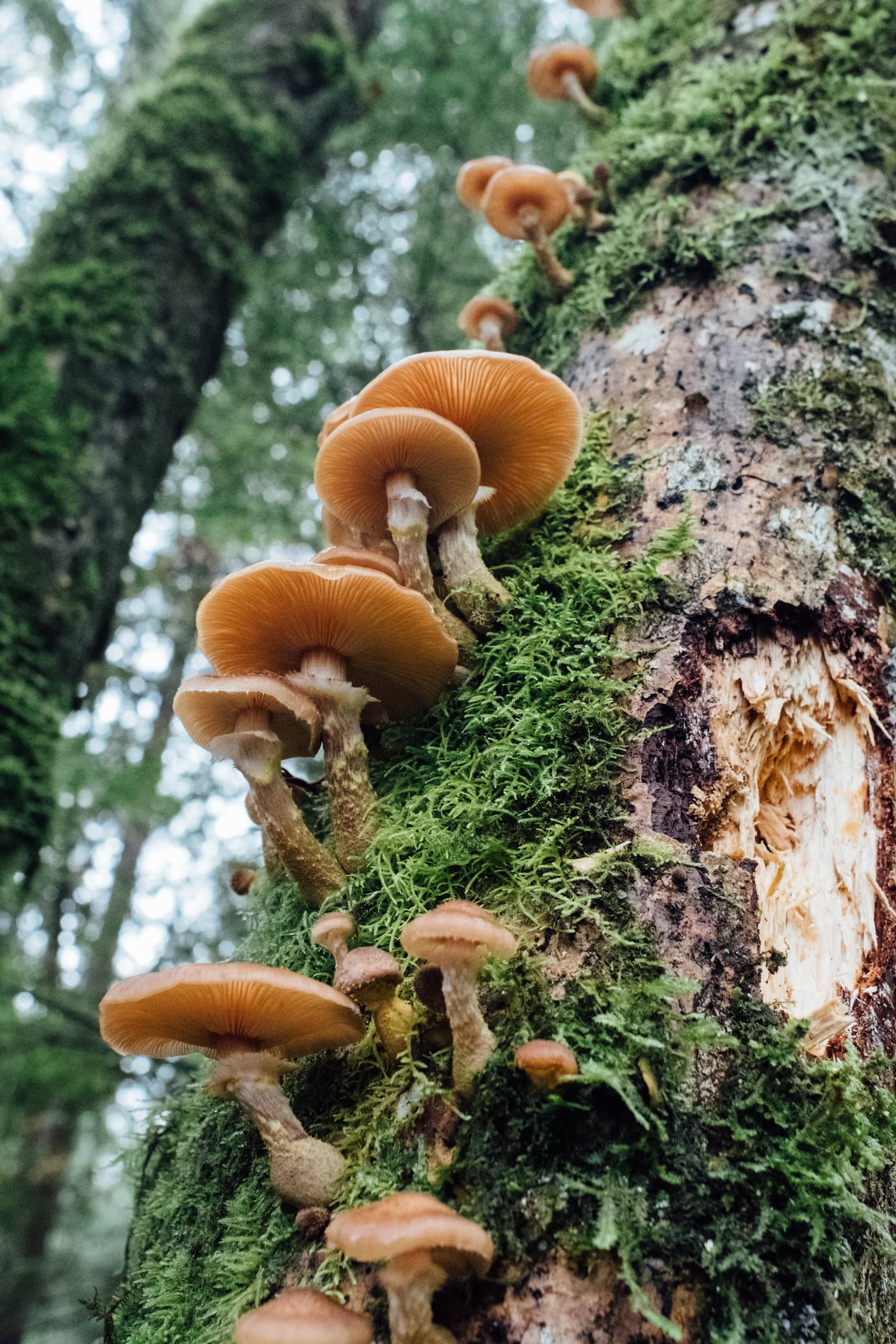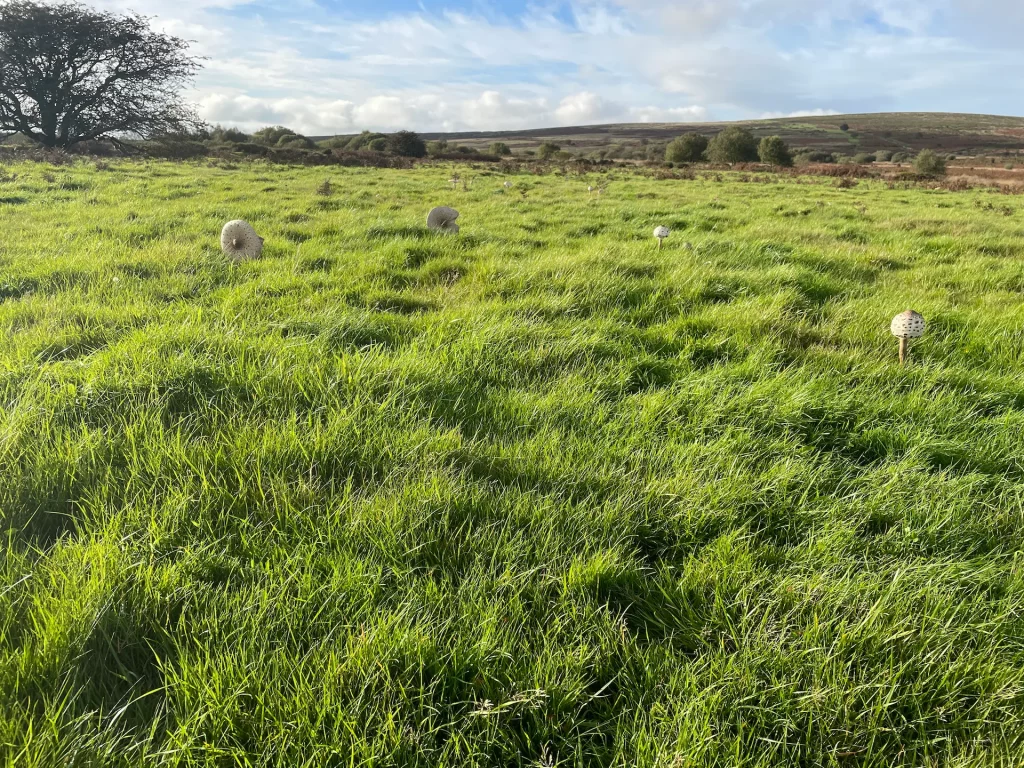Wild medicinal mushrooms in the UK are a fantastic source for creating your own supplements from what nature provides. However, you should always take care to inform yourself of the potential dangers and pay attention.
There’s a whole world of fungi out there that can provide a range of mental and physical health benefits. What’s more, the UK has a complex network of well-established fungi mycelium that has been left to mature and manifest for centuries. It’s one of the mystical elements of our ancient country that is often overlooked. Areas of outstanding beauty are preserved and maintained in the perfect environment to help promote the constant growth and maintenance of already established colonies.
With a bit of guidance and knowledge, you could be foraging in the footsteps of our ancestors and benefiting from the many health advantages that these fungi provide.
What Kind Of Medicinal Mushrooms Grow Wild In The UK & Where To Find Them?
There is a whole host of various edible mushroom species that offer medicinal benefits to those who consume them. However, the list would be endless if we were to cover it here.
To make things a bit simpler and to help you get started on medicinal mushroom foraging, we’ve outlined the two classic fungi to look out for, where they grow, and what time of year.
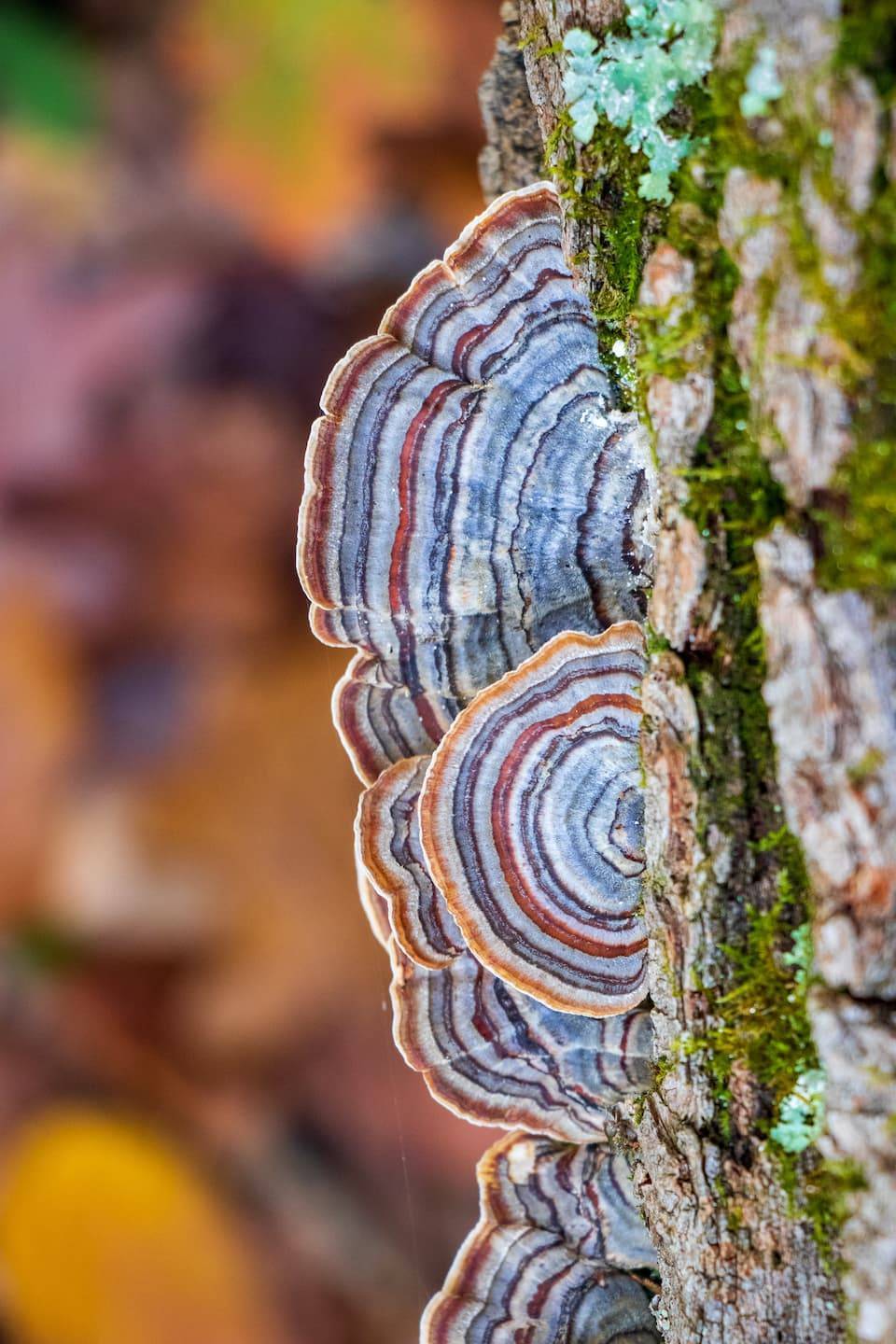
Turkey Tail (Trametes versicolor)
Wild Medicinal Mushroom Habitat
Trametes versicolor is a medicinal mushroom that grows primarily in woodlands around the UK. This is because it feeds mostly on organic matter from decaying timber. Look for old rotting logs and trees.
A fungus of this type typically grows horizontally, wrapping itself around its host. So, instead of looking on the floor for a typical mushroom fruit, look around you for attached fruiting bodies.
Turkey Tail Location
Turkey tail medicinal mushrooms are tough, semi-circular mushrooms that can often be identified by their disc-like horizontal shape and variety of coloured rings. These rings are often concentric and can display numerous colours, hence the name ‘versicolor’.
It’s important to note that although turkey tail is edible, it’s extremely tough and distasteful. As a result, it’s best consumed as a powder.
Wild Turkey Tail Identification
Autumn is the best time to go foraging for this type of fungi. In the UK, the cooling temperatures and moisture levels of autumn provide the perfect climate for the majority of our favourite mushrooms.
Not only is autumn the best climate for wild medicinal mushroom foraging, it’s a beautiful time of year. The leaves are changing colour and falling from the treetops, the birds are active and preparing for winter, and the crisp fog of your breath creates an atmosphere that cannot be replicated any other time of year.
Turkey Tail Lookalikes
There are a few impostors that sit in wait to fool you. Medicinal mushroom foraging is not without its misdirection, and it’s important to be knowledgeable on the subject.
Although there are a few varieties that can be mistaken for turkey tail, the most prominent is the ‘false turkey tail’. This species is of the same genus (Tramates) but can be identified distinctly by the violet, fuzzy underside and reddish hues.
Fortunately, most lookalikes are not poisonous, and if you do your due diligence by taking spore prints, you shouldn’t have an issue finding the right varieties.
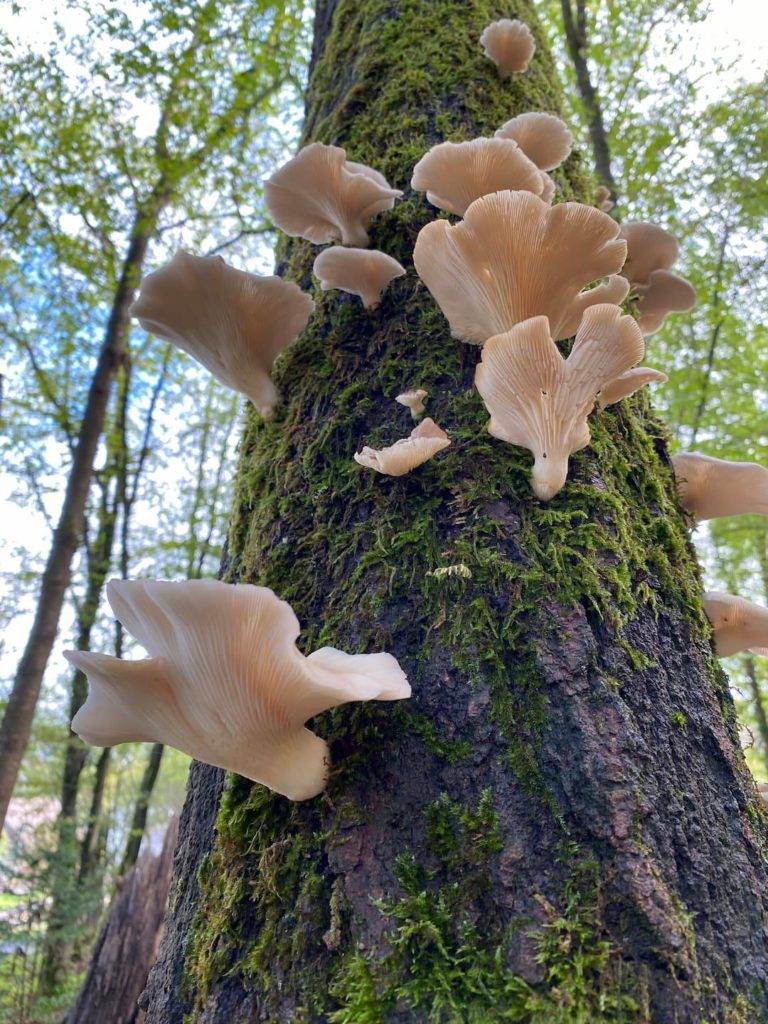
Oyster (Pleurotus ostreatus)
Wild Oyster Mushroom Habitat
Pleurotus ostreatus is a medicinal mushroom commonly found in UK woodlands, much like the turkey tail. Moreover, they primarily grow on trees to feed on decaying organic matter. In particular, oyster mushrooms love beech trees. So, if there’s a plantation near you, then this may be the perfect hunting ground.
Fungi Location
One of the greatest aspects of Pleurotus ostreatus is that it grows year-round. There is no season that does not produce fruit. However, it is common to see an abundance after a cold snap, such as the changing season from autumn to winter.
Oyster Mushroom Identification
Medicinal oyster mushrooms are a common fungus that is not only found wild in the UK but also grown commercially worldwide. They are known for their aniseed undertones and oyster-like appearance.
When foraging for these types of fungi, keep an eye out for their fan-shaped white-grey cap, creamy or white gills, and a centred stipe. If you’re really thorough and want to be sure of the species you’re picking, you can take a spore print to confirm a white/grey colour.
Medicinal Oyster Lookalikes
The majority of medicinal oyster mushroom lookalikes are non-toxic. However, there is one species to be on the lookout for. Pleurocybella porrigens is commonly known as angel wings and has been recorded as causing fatalities, so it should be avoided at all costs.
It can be most notably singled out by its snow-white appearance, funnel-like shape, and lack of stem.
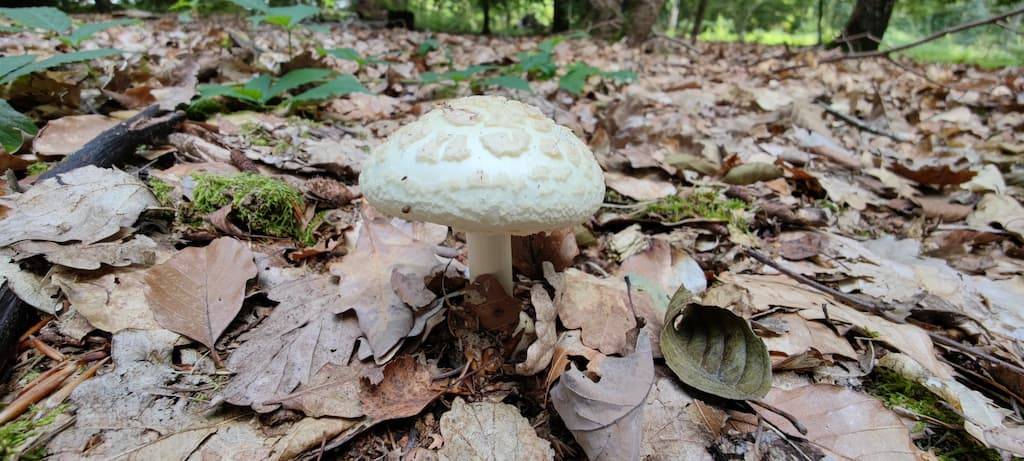
Are There Dangerous Wild Medicinal Mushroom Lookalikes?
Unfortunately, foraging for wild medicinal mushrooms is not without its dangers. Although it’s easy to identify edible varieties with a bit of knowledge, there have been a number of deaths associated with picking the wrong fungi. As a result, it’s essential to take care when picking mushrooms and research thoroughly before embarking on your first session.
We’ve done our best to give you a rudimentary outline of how to begin, but if you’re still looking for more information, we recommend visiting other trustworthy sites such as The Wildlife Trusts.

